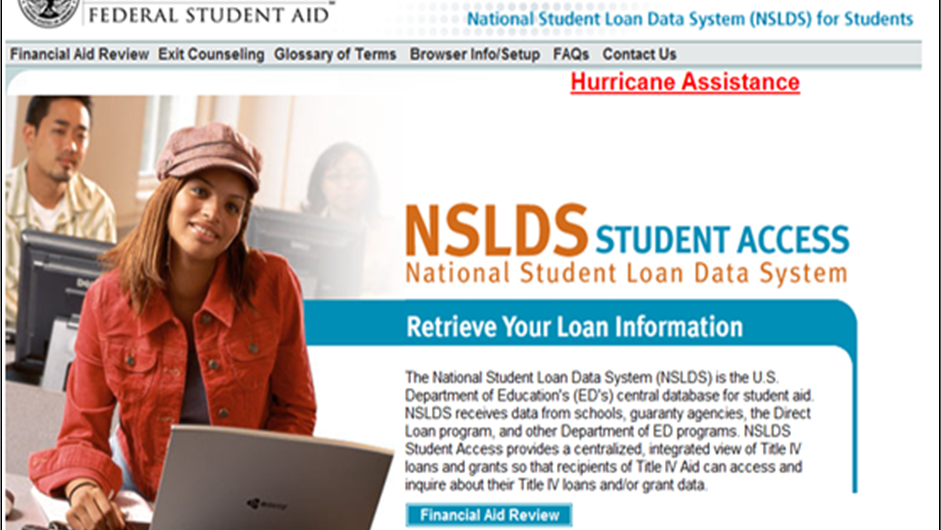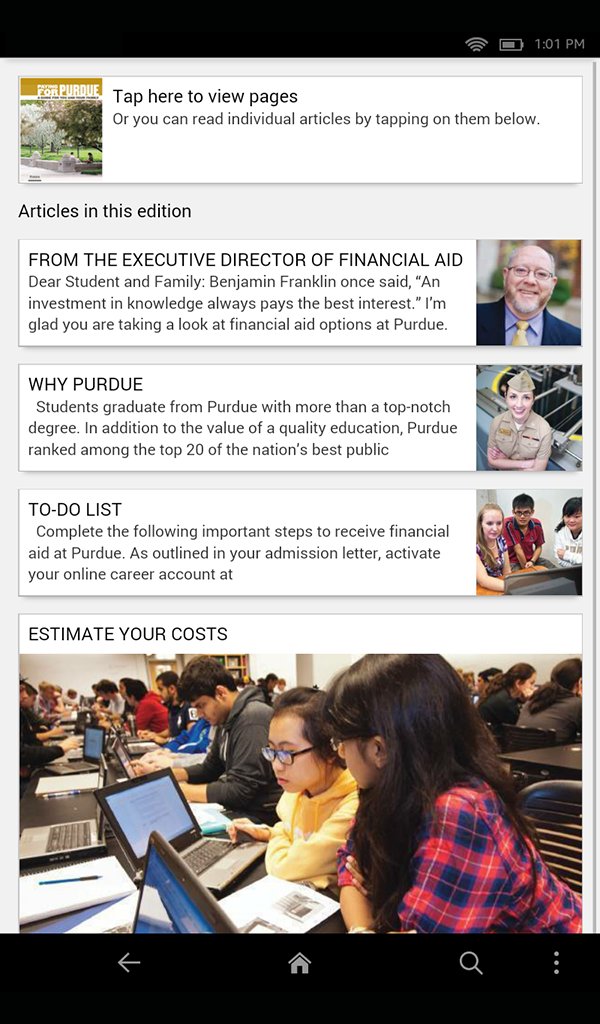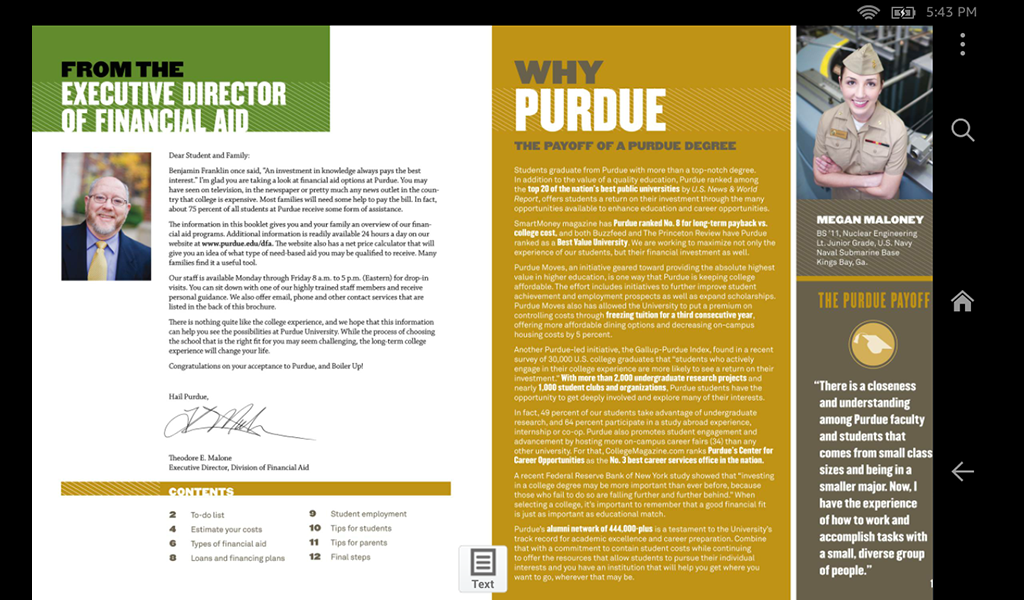A Pell Grant is money the U.S. federal government provides for students who need it to pay for college. It is an entitlement (awards are guaranteed if criteria are met). Federal Pell Grants are limited to students with financial need, who have not earned their first bachelor's degree, or who are enrolled in certain post-baccalaureate programs, through participating institutions. The Pell Grant is named after Democratic U.S. Senator Claiborne Pell of Rhode Island, and was originally known as the Basic Educational Opportunity Grant. A Pell Grant is generally considered the foundation of a student's financial aid package, to which other forms of aid are added. The Federal Pell Grant program is administered by the United States Department of Education, which determines the student's financial need and through it, the student's Pell eligibility. The U.S. Department of Education uses a standard formula to evaluate financial information reported on the Free Application for Federal Student Aid (FAFSA) for determining the student's expected family contribution (EFC).
Pell Grants were created by the Higher Education Act of 1965. These federal funded grants are not like loans, and need not be repaid. Students may use their grants at any one of approximately 5,400 participating postsecondary institutions. These federally funded grants help about 5.4 million full-time and part-time college and vocational school students nationally. For the 2010-2011 school year, seven of the top 10 colleges by total Pell Grant money awarded were for-profit institutions.

History
Today, the Pell Grant program assists undergraduates of low-income families, who are actively attending universities and or other secondary institutions. However, before the Pell Grant became what it is today, it went through numerous changes.
In 1965, Congress passed the Higher Education Act of 1965 (HEA). President Lyndon B. Johnson implemented the HEA as a part of his administration's agenda to assist and improve higher education in the United States. This was the initial legislation to benefit students of lower and middle-income. The HEA program included not only grants, but also low interest loans to students who did not qualify for grants. Universities and other institutions, such as vocational schools, benefited as well from the HEA program, receiving federal aid to improve the quality of the education process. Student aid programs administered by the U.S. Department of Education are contained in Title IV of the HEA, which is why they are called "Title IV Programs."
In 1972, Title IX Higher Education Amendments were a response to the distribution of aid in the current grant. Senator Claiborne Pell set forth the initial movements to reform the HEA. Opportunity Grant Program (Basic Grant) were intended to serve as the "floor" or "foundation" of an undergraduate student's financial aid package. Other financial aid, to the extent that it was available, would be added to the Basic Grant up to the limit of a student's financial need. Most changes to the federal student aid program result from a process called reauthorization. Through the process of reauthorization, Congress examines the status of each program and decides whether to continue that program, and whether a continued program requires changes in structure or purpose. Congress has reauthorized campus-based programs every five or six years, beginning in 1972.
The Higher Education Amendments of 1972
The Higher Education Amendments of 1972 reauthorized the three campus-based programs, leaving the Economic Opportunity Grant Program with the same name, but renaming the two others: the National Defense Student Loan Program became the National Direct Student Loan or Federal Direct Student Loan Program; and the Federal Supplemental Educational Opportunity Grant Program (SEOG). In addition, Proprietary (profit-making) schools became eligible to use Title IV Funds. Also, the Educational Opportunity Grant Program would no longer function as a stand-alone program of gift aid, but instead would be linked with the Basic Grant Program.
In 1978 the Middle Income Student Assistance Act of 1978 (MISAA) was signed into act by President Jimmy Carter. This bill provides more generous Basic Educational Opportunity Grant--Pell grants-to low-income students, and makes eligible students from families with income up to about $250,000. An additional 1.5 million students from middle-income families will be eligible for the Basic Grants program.
In 1978, the alterations to the HEA were made to honor Rhode Island Senator Claiborne Pell with his hard work and dedication to improving the higher education of the students in the United States.
Education Amendments of 1978
Middle-income families were now able to borrow $300 a year for each dependent child in school regardless of parent income.
Recent legislation
Several changes to the program occurred in 2011. The maximum award amount for the 2011-2012 award year is $55,000. Despite a shortened application process, fewer funds for the 2011-2012 program could lead to financial problems for many students. The government funded the program at $17.1 billion from 2008-2010, as part of the American Recovery and Reinvestment Act of 2009. However, the additional funding does not match the needs of increasing numbers of students who enroll in college and qualify for aid through the recession. The Pell Grant program was subject to a $5.7 billion decrease in funding as part of a continuing resolution (H.R. 1), which cleared the House in February 2011 and cut about $60 billion from the federal budget. The changes would take effect for the 2011-12 school year, decreasing the maximum amount of aid for the most needy students from $5,550 to $4,705 a year; in addition, about 1.7 million students who receive smaller Pell Grants would become ineligible for the program. Approval for the cuts is not certain due to long-standing bipartisan support from the Senate. As of April 6, 2011 funds have not been approved, as the Senate has not voted to pass this legislation.
Information For Financial Aid Professionals Video
Application
The application process requires the student and the student's family complete a Free Application for Federal Student Aid (FAFSA) form. The applicant should complete the FAFSA form for the first time prior to starting the freshman undergraduate year, and then update the form each year as he/she progresses through the college undergraduate term. The first step in applying for the Pell Grant is to complete or update the FAFSA form on or after Jan 1 of each year. The FAFSA application can be completed and submitted at www.fafsa.ed.gov. There are self-explanatory instructions in the "Fill out a FAFSA" section. High school Students can get a FAFSA form from school counselors or fill out the form online. If an applicant must correct a completed FAFSA form, they do so in step 3 of the application, in the "Make corrections to a processed FAFSA" section. When the student completes or updates the FAFSA application, they answer questions that determine eligibility for the Pell Grant, among other government grants and funding. After they submit the initial FAFSA application, the student is notified by email or regular postal delivery if funding is awarded. Students or parents should always make copies of the confirmation sheet for personal records.
Eligibility
The United States Department of Education has a standard formula that it uses to evaluate the information that each person supplies when applying for the Pell Grant. The formula used was created by Congress from criteria submitted through the FAFSA form. This formula produces a number that is called the Expected Family Contribution (EFC), which determines the student's eligibility.
This grant requires that each applicant be an undergraduate student who has not yet earned a bachelor's degree, and a United States citizen or an eligible non-citizen (usually, a permanent resident). In addition, the applicant must have a high school diploma, a GED, or can demonstrate the ability to benefit from the program. Applicants must also sign a statement certifying that they will only use the aid for education-related purposes, that they are not currently in default for any federal student loans, and that they don't owe a refund for any federal education grants.
The Pell Grant also requires that students maintain satisfactory academic progress in a degree-oriented program as defined by the school they attend. Males between the ages of 18 and 25 must register with the Selective Service. A person may be eligible if previously incarcerated, but with limited eligibility depending on the offense. Students may be ineligible if they have been convicted of a drug-related offense, though this depends on the actual charge, when it happened, and if they attended a drug rehabilitation program. They must not have an outstanding Pell overpayment on record. Students who received a full scholarship of any kind are ineligible.
An applicant may not receive Pell Grant funds from more than one college at a time.
Drug conviction
Students who have received a drug conviction while receiving federal student aid may become ineligible for further aid, depending on personal circumstances. Such ineligibility may be reversed with appropriate remediation.
Award amount
As with all grants, there is a maximum amount that the government funds for each applicant. For the 2010-2011, 2011-2012, 2012-2013, and 2013-2014 award years, the maximum amount was $5,645. The maximum amount has increased for the 2014-2015 award year to $5730. The maximum amount of the grant usually depends on the EFC and several other factors, including cost of attendance, the amount of time the student plans to attend college, whether it is a full academic year, and whether one is a full-time or part-time student Once one has been considered eligible, the money can be obtained a couple of ways: the student's school can apply Pell Grant funds to school costs, pay the student directly, usually by check, or combine these methods. The school must tell the student in writing how much the award will be and how and when it will be paid, and disburse Pell Grant funds once a semester/term or twice during the academic year. Under certain circumstances, Pell funds can also be used to fund Career Pathways programs and support services.
Costs the grant can be used for
Typically, the college first applies the grant or loan money toward a student's tuition, fees, and (if the student lives on campus) room and board. Any money left over is paid to the student for other expenses: books, living expenses if the student does not live on campus, and transportation.

Impact of Pell Grants
Students coming from low-income families already face increased challenges that hinder their ability to receive a higher education. The Pell Grant addresses one of the issues by making college accessible to students that may need the financial assistance. It has been shown to increase the college enrollment of students coming from low- and moderate-income families. It can also reduce the chances of them dropping out.
Appropriations
Fiscal Year 2011: $41,674,180,000 Fiscal Year 2010: $21,772,000,000 Fiscal Year 2009 : $19,378,000,000 Fiscal Year 2008 : $16,256,000,000 Fiscal Year 2007 : $13,660,711,000 Note: The amount for FY 2006 includes $4.3 billion to retire prior-year funding shortfalls; the amount for FY 2008 includes $2 billion in mandatory funds.
Note: The amounts for FY 2008 and FY 2009 include $2,000,000,000 and $2,100,000,000, respectively, in mandatory funds. In addition, the $17,114,000,000 in 70 U .S. Department of Education Recovery Act funds includes $1,474,000,000 in mandatory funds, of which 831,000,000 is for use in academic year 2010-11.
Note: The amount for FY 2009 includes $2,090,000,000 in definite mandatory funds and $16,283,000,000 in American Recovery and Reinvestment Act of 2009 funds, of which $643,000,000 is mandatory. The FY 2010 appropriation amount includes $5,299,816,000 in indefinite mandatory funds. The FY 2011 appropriation above includes $13,500,000,000 in mandatory funds to help reduce discretionary need and $5,218,184,000, which is the estimate of indefinite mandatory funds needed. http://www2.ed.gov/programs/fpg/funding.html

Awards Information
2011
Amount of Aid Available: $35,772,935,000 Amount of Aid Available represents the amount of funds to be awarded to participants in this program. Number of New Awards Anticipated: 9,413,000 Average New Award: $3,800 Range of New Awards: $555-$5,550
2010
Amount of Aid Available: $6,000 Amount of Aid Available represents the amount of funds to be awarded to participants in this program. Number of New Awards Anticipated: 8,355,000 Average New Award: $3,865 Range of New Awards: $555-$5,550
2009
Amount of Aid Available: $25,328,889,000 Amount of Aid Available represents the amount of funds awarded to participants in the Federal Student Aid programs. Depending upon the program, this total may include federal appropriated dollars, institutional or state matching dollars, and federal or private loan capital. Number of New Awards Anticipated: 7,022,000 Average New Award: $3,611 Range of New Awards: $486-$5,350
2008
Amount of Aid Available: $16,428,110,000 Amount of Aid Available represents the amount of funds awarded to participants in the Federal Student Aid programs. Depending upon the program, this total may include federal appropriated dollars, institutional or state matching dollars, and federal or private loan capital. Number of New Awards Anticipated: 5,578,000 Average New Award: $2,945 Range of New Awards: $400-$4,731
2007
Amount of Aid Available: $13,989,305,000 Amount of Aid Available represents the amount of funds awarded to participants in the Federal Student Aid programs. Depending upon the program, this total may include federal appropriated dollars, institutional or state matching dollars, and federal or private loan capital. Number of New Awards Anticipated: 5,339,000 Average New Award: $2,620 Range of New Awards: $400-$4,310

Federal Pell Grant Lifetime Eligibility calculator
'Scheduled award:'The maximum amount of Federal Pell Grant funding a student can receive is calculated for an award year. An award year is a period from July 1 of one calendar year to June 30 of the next year.
The scheduled award is partially determined using the student's expected family contribution (EFC), which the program calculates from the information the student and family provided in the Free Application for Federal Student Aid (FAFSA). The result is the maximum amount the student can receive for the award year if enrolled full-time for the full school year. It represents 100% of the Pell Grant eligibility for that award year.
Percent used: To determine how much of the maximum six years (600%) of Pell Grant the student uses each year, the U.S. Department of Education (ED) compares the actual amount awarded for the award year with the scheduled award amount for that award year. A student who uses 100% receives the full award. A student might not receive the entire scheduled award for an award year. A number of things can cause this--most commonly, the student didn't enroll for the full year, did not enroll full-time, or both. If the student doesn't receive the full award, ED calculates the percentage of the scheduled award they did receive. Before the 2011-2012 Aid Year the FAFSA limit was 18 semesters. This was cut to 12 semesters by the Republican controlled house.
Lifetime Eligibility Used (LEU): ED tracks the LEU by adding the percentages of the Pell Grant scheduled awards a student receives each award year. The table below shows LEUs for three students who received differing amounts of their scheduled awards over a four-year period.

Contacts
Federal Student Aid Information Center Telephone: (800) 433-3243 or (800) 4FED-AID
Are You Looking for Products
Here some products related to "Pell Grant".
Calculated Industries 341..
Purdue Financial Aid: App..
Purdue Financial Aid: App..
Purdue Financial Aid: App..
Get these at Amazon.com* amzn.to is official short URL for Amazon.com, provided by Bitly
Source of the article : here






EmoticonEmoticon